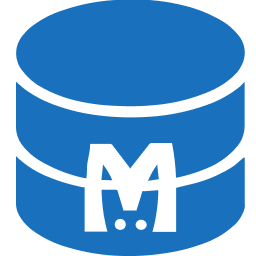New to KubeDB? Please start here.
Cassandra
What is Cassandra
Cassandra is a Kubernetes Custom Resource Definitions (CRD). It provides declarative configuration for Cassandra in a Kubernetes native way. You only need to describe the desired database configuration in a Cassandra object, and the KubeDB operator will create Kubernetes objects in the desired state for you.
Cassandra Spec
As with all other Kubernetes objects, a Cassandra needs apiVersion, kind, and metadata fields. It also needs a .spec section. Below is an example Cassandra object.
apiVersion: kubedb.com/v1alpha2
kind: Cassandra
metadata:
name: cassandra
namespace: demo
spec:
authSecret:
kind: Secret
name: cassandra-admin-cred
configSecret:
name: cassandra-custom-config
healthChecker:
failureThreshold: 3
periodSeconds: 20
timeoutSeconds: 10
keystoreCredSecret:
kind: Secret
name: cassandra-keystore-cred
deletionPolicy: DoNotTerminate
tls:
certificates:
- alias: server
secretName: cassandra-server-cert
- alias: client
secretName: cassandra-client-cert
issuerRef:
apiGroup: cert-manager.io
kind: Issuer
name: cassandra-ca-issuer
topology:
rack:
- name: r0
replicas: 2
storage:
accessModes:
- ReadWriteOnce
resources:
requests:
storage: 1Gi
podTemplate:
spec:
containers:
- name: cassandra
resources:
limits:
memory: 4Gi
cpu: 2000m
requests:
memory: 1Gi
cpu: 500m
securityContext:
runAsUser: 999
fsGroup: 999
monitor:
agent: prometheus.io/operator
prometheus:
exporter:
port: 56790
serviceMonitor:
labels:
release: prometheus
interval: 10s
version: 5.0.3
spec.version
spec.version is a required field specifying the name of the CassandraVersion crd where the docker images are specified. Currently, when you install KubeDB, it creates the following Cassandra resources,
4.1.85.0.3
spec.replicas
spec.replicas the number of members in Cassandra replicaset.
If spec.topology is set, then spec.replicas needs to be empty. Instead use spec.topology.rack[ind].replicas.
KubeDB uses PodDisruptionBudget to ensure that majority of these replicas are available during voluntary disruptions so that quorum is maintained.
spec.authSecret
spec.authSecret is an optional field that points to a Secret used to hold credentials for cassandra admin user. If not set, KubeDB operator creates a new Secret {cassandra-object-name}-auth for storing the password for admin user for each Cassandra object.
We can use this field in 3 mode.
- Using an external secret. In this case, You need to create an auth secret first with required fields, then specify the secret name when creating the Cassandra object using
spec.authSecret.name& setspec.authSecret.externallyManagedto true.
authSecret:
name: <your-created-auth-secret-name>
externallyManaged: true
- Specifying the secret name only. In this case, You need to specify the secret name when creating the Cassandra object using
spec.authSecret.name.externallyManagedis by default false.
authSecret:
name: <intended-auth-secret-name>
- Let KubeDB do everything for you. In this case, no work for you.
AuthSecret contains a user key and a password key which contains the username and password respectively for Cassandra admin user.
Example:
$ kubectl create secret generic cassandra-auth -n demo \
--from-literal=username=jhon-doe \
--from-literal=password=6q8u_2jMOW-OOZXk
secret "cassandra-auth" created
apiVersion: v1
data:
password: NnE4dV8yak1PVy1PT1pYaw==
username: amhvbi1kb2U=
kind: Secret
metadata:
name: cassandra-auth
namespace: demo
type: Opaque
Secrets provided by users are not managed by KubeDB, and therefore, won’t be modified or garbage collected by the KubeDB operator (version 0.13.0 and higher).
spec.configSecret
spec.configSecret is an optional field that points to a Secret used to hold custom Cassandra configuration. If not set, KubeDB operator will use default configuration for Cassandra.
spec.topology
spec.topology represents the topology configuration for Cassandra cluster.
When spec.topology is set, the following fields needs to be empty, otherwise validating webhook will throw error.
spec.replicasspec.podTemplatespec.storage
spec.topology.rack
rack represents a logical grouping of nodes of Cassandra cluster. spec.topology.rack[] is an array of RackSpec. It is a mandatory field when spec.topology is specified. Each RackSpec describes the configuration of a single rack — including its name, number of replicas, pod template, and storage options.
Available configurable fields:
name(: "rack-east") — is amandatoryfield that specifies the unique name of the rack. Cassandra uses this name to assign and distribute replicas logically across racks.replicas(: "3") — is anoptionalfield to specify the number of Cassandra nodes (pods) to deploy in this rack. This field must hold a value greater than0.podTemplate(: "<custom pod template>") — is anoptionalfield that allows you to customize pod-level configurations (like affinity, tolerations, nodeSelector, container resources) for pods within this rack.storage(: "resources.requests.storage: 10Gi") — is an optional field to define how persistent storage should be configured for the pods in this rack. It uses a standard PersistentVolumeClaimSpec format.storageType(: "Durable") — is anoptionalfield to specify whether the pods in this rack should useDurable(persistent disk-backed) orEphemeral(temporary) storage. Defaults toDurable.
spec.tls
spec.tls specifies the TLS/SSL configurations. The KubeDB operator supports TLS management by using the cert-manager.
spec:
tls:
issuerRef:
apiGroup: "cert-manager.io"
kind: Issuer
name: cassandra-issuer
certificates:
- alias: server
privateKey:
encoding: PKCS8
secretName: cassandra-client-cert
subject:
organizations:
- kubedb
- alias: http
privateKey:
encoding: PKCS8
secretName: cassandra-server-cert
subject:
organizations:
- kubedb
The spec.tls contains the following fields:
tls.issuerRef- is anoptionalfield that references to theIssuerorClusterIssuercustom resource object of cert-manager. It is used to generate the necessary certificate secrets for Cassandra. If theissuerRefis not specified, the operator creates a self-signed CA and also creates necessary certificate (valid: 365 days) secrets using that CA.apiGroup- is the group name of the resource that is being referenced. Currently, the only supported value iscert-manager.io.kind- is the type of resource that is being referenced. The supported values areIssuerandClusterIssuer.name- is the name of the resource (IssuerorClusterIssuer) that is being referenced.
tls.certificates- is anoptionalfield that specifies a list of certificate configurations used to configure the certificates. It has the following fields:alias- represents the identifier of the certificate. It has the following possible value:server- is used for the server certificate configuration.client- is used for the client certificate configuration.
secretName- (string|"<database-name>-alias-cert") - specifies the k8s secret name that holds the certificates.subject- specifies anX.509distinguished name (DN). It has the following configurable fields:organizations([]string|nil) - is a list of organization names.organizationalUnits([]string|nil) - is a list of organization unit names.countries([]string|nil) - is a list of country names (ie. Country Codes).localities([]string|nil) - is a list of locality names.provinces([]string|nil) - is a list of province names.streetAddresses([]string|nil) - is a list of street addresses.postalCodes([]string|nil) - is a list of postal codes.serialNumber(string|"") is a serial number.
For more details, visit here.
duration(string|"") - is the period during which the certificate is valid. A duration string is a possibly signed sequence of decimal numbers, each with optional fraction and a unit suffix, such as"300m","1.5h"or"20h45m". Valid time units are “ns”, “us” (or “µs”), “ms”, “s”, “m”, “h”.renewBefore(string|"") - is a specifiable time before expiration duration.dnsNames([]string|nil) - is a list of subject alt names.ipAddresses([]string|nil) - is a list of IP addresses.uris([]string|nil) - is a list of URI Subject Alternative Names.emailAddresses([]string|nil) - is a list of email Subject Alternative Names.
spec.monitor
Cassandra managed by KubeDB can be monitored with Prometheus operator out-of-the-box. To learn more,
spec.podTemplate
KubeDB allows providing a template for database pod through spec.podTemplate. KubeDB operator will pass the information provided in spec.podTemplate to the PetSet created for Cassandra cluster.
KubeDB accept following fields to set in spec.podTemplate:
- metadata:
- annotations (pod’s annotation)
- labels (pod’s labels)
- controller:
- annotations (petset’s annotation)
- labels (petset’s labels)
- spec:
- containers
- volumes
- podPlacementPolicy
- initContainers
- containers
- imagePullSecrets
- nodeSelector
- serviceAccountName
- schedulerName
- tolerations
- priorityClassName
- priority
- securityContext
You can check out the full list here.
Uses of some field of spec.podTemplate is described below,
spec.podTemplate.spec.tolerations
The spec.podTemplate.spec.tolerations is an optional field. This can be used to specify the pod’s tolerations.
spec.podTemplate.spec.volumes
The spec.podTemplate.spec.volumes is an optional field. This can be used to provide the list of volumes that can be mounted by containers belonging to the pod.
spec.podTemplate.spec.podPlacementPolicy
spec.podTemplate.spec.podPlacementPolicy is an optional field. This can be used to provide the reference of the podPlacementPolicy. name of the podPlacementPolicy is referred under this attribute. This will be used by our Petset controller to place the db pods throughout the region, zone & nodes according to the policy. It utilizes kubernetes affinity & podTopologySpreadContraints feature to do so.
spec:
podPlacementPolicy:
name: default
spec.podTemplate.spec.nodeSelector
spec.podTemplate.spec.nodeSelector is an optional field that specifies a map of key-value pairs. For the pod to be eligible to run on a node, the node must have each of the indicated key-value pairs as labels (it can have additional labels as well). To learn more, see here .
spec.serviceTemplates
You can also provide template for the services created by KubeDB operator for Cassandra cluster through spec.serviceTemplates. This will allow you to set the type and other properties of the services.
KubeDB allows following fields to set in spec.serviceTemplates:
aliasrepresents the identifier of the service. It has the following possible value:statsfor is used for theexporterservice identification.
There are two options for providing serviceTemplates:
To provide
serviceTemplatesfor a specific service, theserviceTemplates.ports.portshould be equal to the port of that service andserviceTemplatewill be used for that particular service only.However, to provide a common
serviceTemplates,serviceTemplates.ports.portshould be empty.metadata:
- labels
- annotations
spec:
- type
- ports
- clusterIP
- externalIPs
- loadBalancerIP
- loadBalancerSourceRanges
- externalTrafficPolicy
- healthCheckNodePort
- sessionAffinityConfig
See here to understand these fields in detail.
spec.podTemplate.spec.containers
The spec.podTemplate.spec.containers can be used to provide the list containers and their configurations for to the database pod. some of the fields are described below,
spec.podTemplate.spec.containers[].name
The spec.podTemplate.spec.containers[].name field used to specify the name of the container specified as a DNS_LABEL. Each container in a pod must have a unique name (DNS_LABEL). Cannot be updated.
spec.podTemplate.spec.containers[].args
spec.podTemplate.spec.containers[].args is an optional field. This can be used to provide additional arguments to database installation.
spec.podTemplate.spec.containers[].env
spec.podTemplate.spec.containers[].env is an optional field that specifies the environment variables to pass to the Cassandra containers.
spec.podTemplate.spec.containers[].resources
spec.podTemplate.spec.containers[].resources is an optional field. This can be used to request compute resources required by containers of the database pods. To learn more, visit here.
spec.deletionPolicy
deletionPolicy gives flexibility whether to nullify(reject) the delete operation of Cassandra crd or which resources KubeDB should keep or delete when you delete Cassandra crd. KubeDB provides following four deletion policies:
- DoNotTerminate
- WipeOut
- Halt
- Delete
When deletionPolicy is DoNotTerminate, KubeDB takes advantage of ValidationWebhook feature in Kubernetes 1.9.0 or later clusters to implement DoNotTerminate feature. If admission webhook is enabled, DoNotTerminate prevents users from deleting the database as long as the spec.deletionPolicy is set to DoNotTerminate.
Following table show what KubeDB does when you delete Cassandra crd for different termination policies,
| Behavior | DoNotTerminate | Halt | Delete | WipeOut |
|---|---|---|---|---|
| 1. Block Delete operation | ✓ | ✗ | ✗ | ✗ |
| 2. Delete PetSet | ✗ | ✓ | ✓ | ✓ |
| 3. Delete Services | ✗ | ✓ | ✓ | ✓ |
| 4. Delete PVCs | ✗ | ✗ | ✓ | ✓ |
| 5. Delete Secrets | ✗ | ✗ | ✗ | ✓ |
| 6. Delete Snapshots | ✗ | ✗ | ✗ | ✓ |
If you don’t specify spec.deletionPolicy KubeDB uses Delete termination policy by default.
spec.healthChecker
It defines the attributes for the health checker.
spec.healthChecker.periodSecondsspecifies how often to perform the health check.spec.healthChecker.timeoutSecondsspecifies the number of seconds after which the probe times out.spec.healthChecker.failureThresholdspecifies minimum consecutive failures for the healthChecker to be considered failed.spec.healthChecker.disableWriteCheckspecifies whether to disable the writeCheck or not.
Know details about KubeDB Health checking from this blog post.
Next Steps
- Learn how to use KubeDB to run Apache Cassandra cluster here.
- Monitor your Cassandra cluster with KubeDB using
out-of-the-boxPrometheus operator. - Detail concepts of CassandraVersion object.
- Want to hack on KubeDB? Check our contribution guidelines.



































